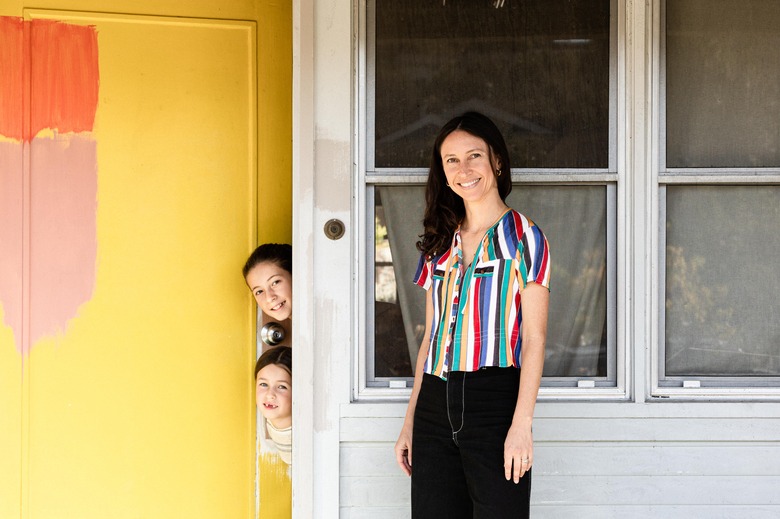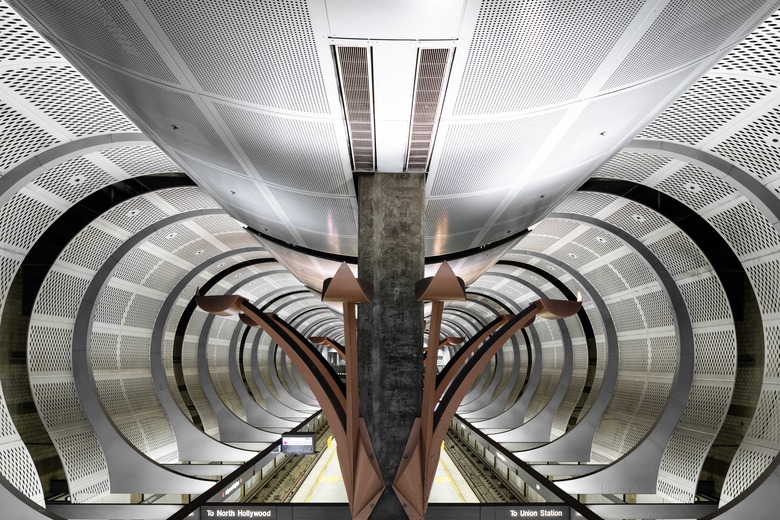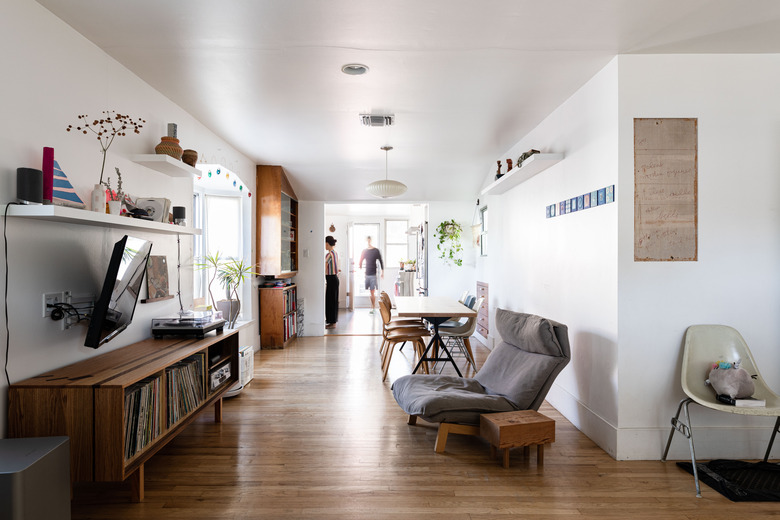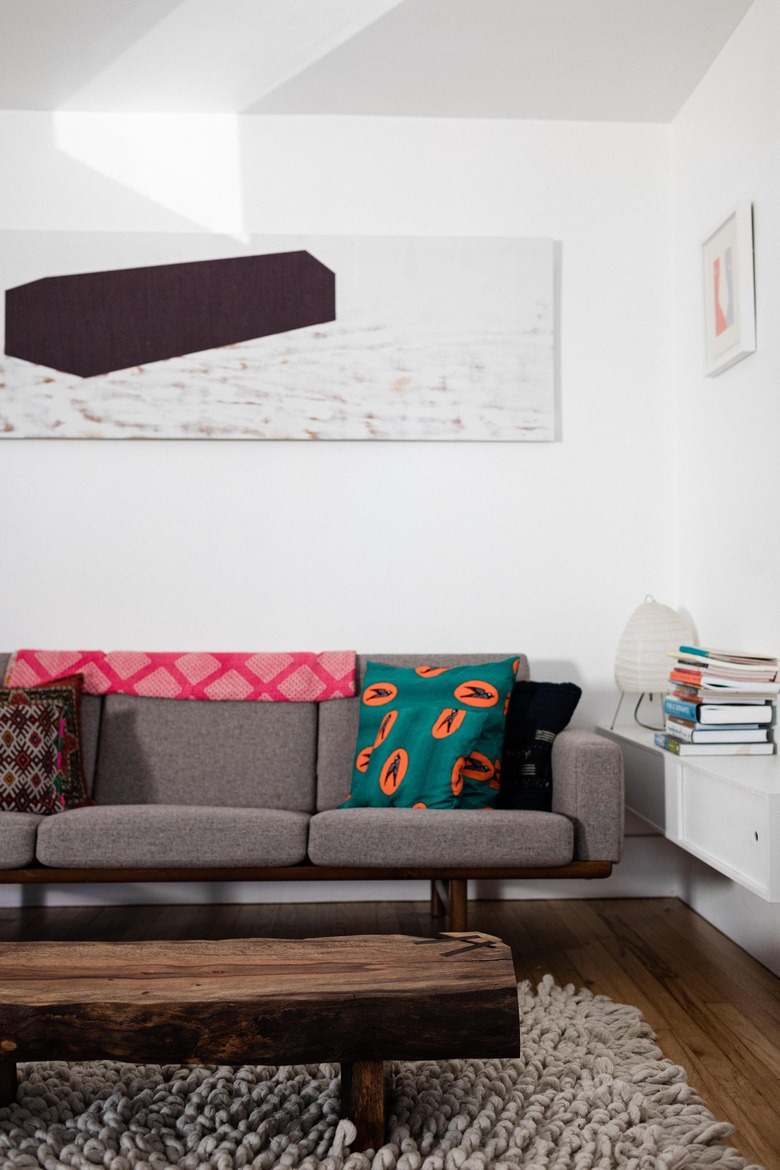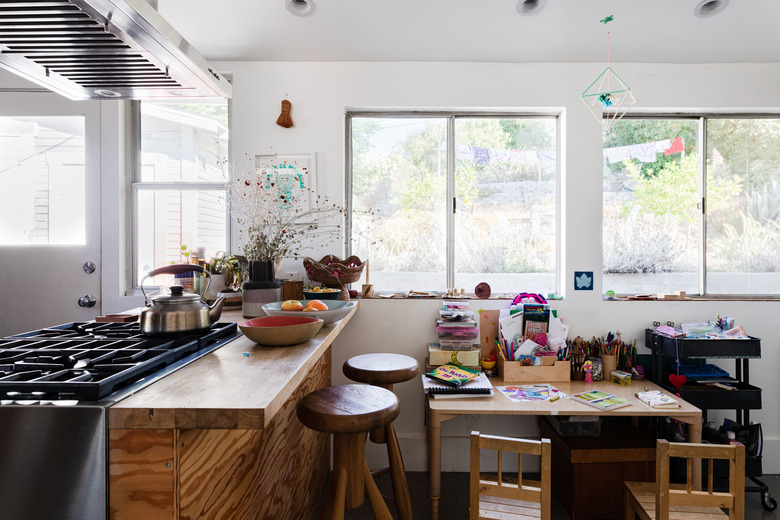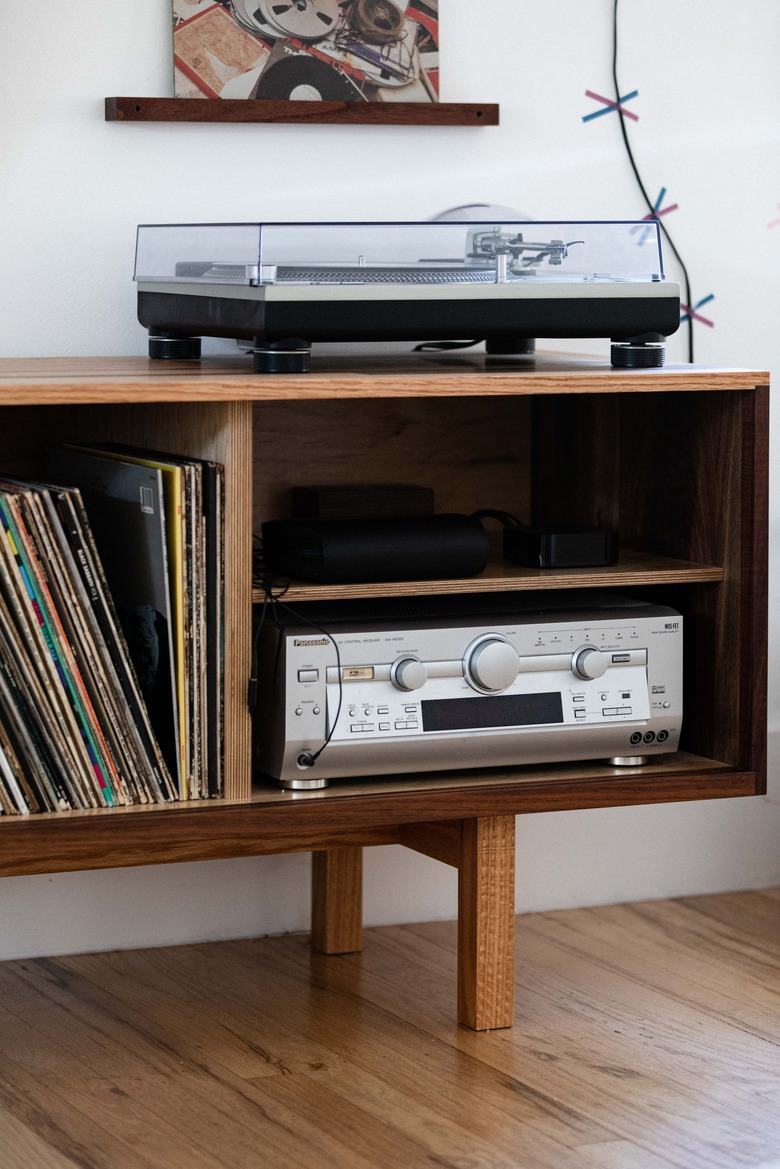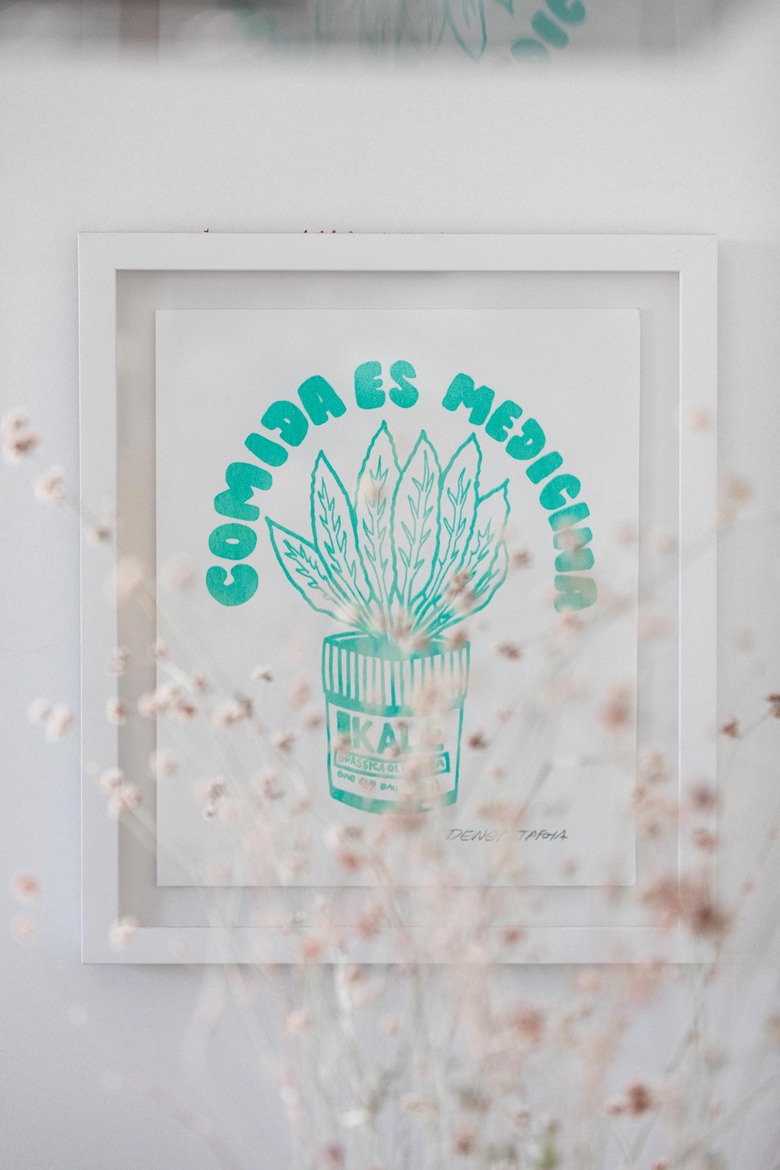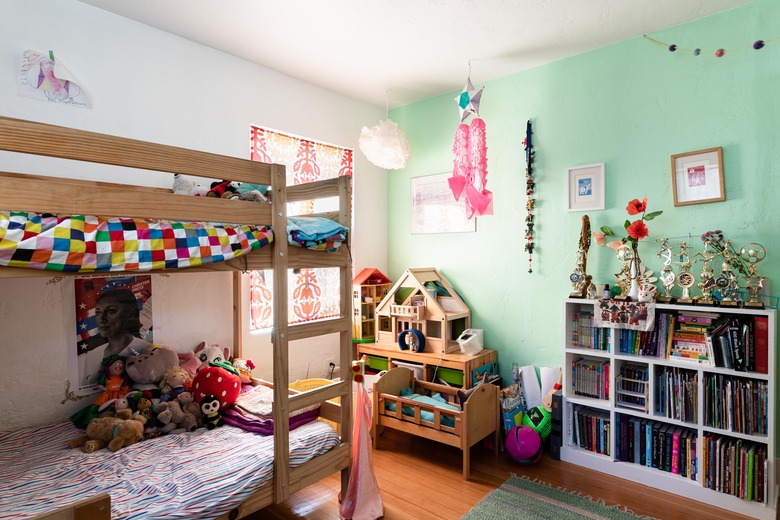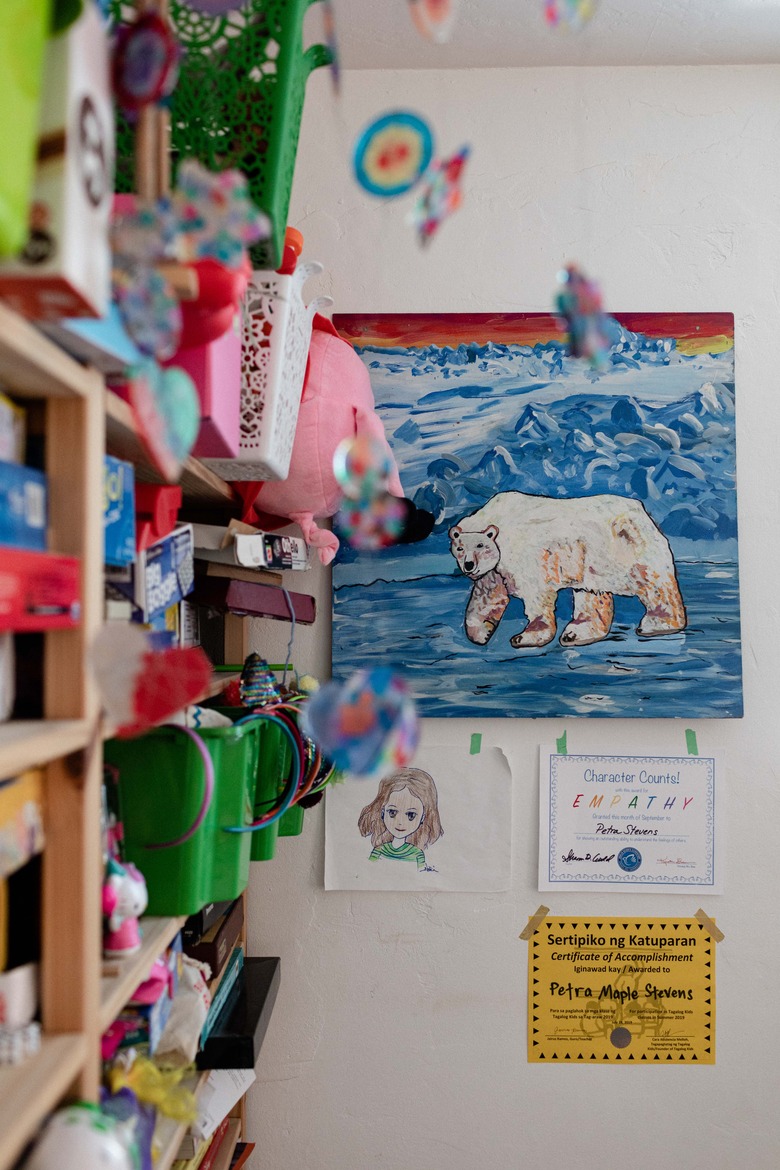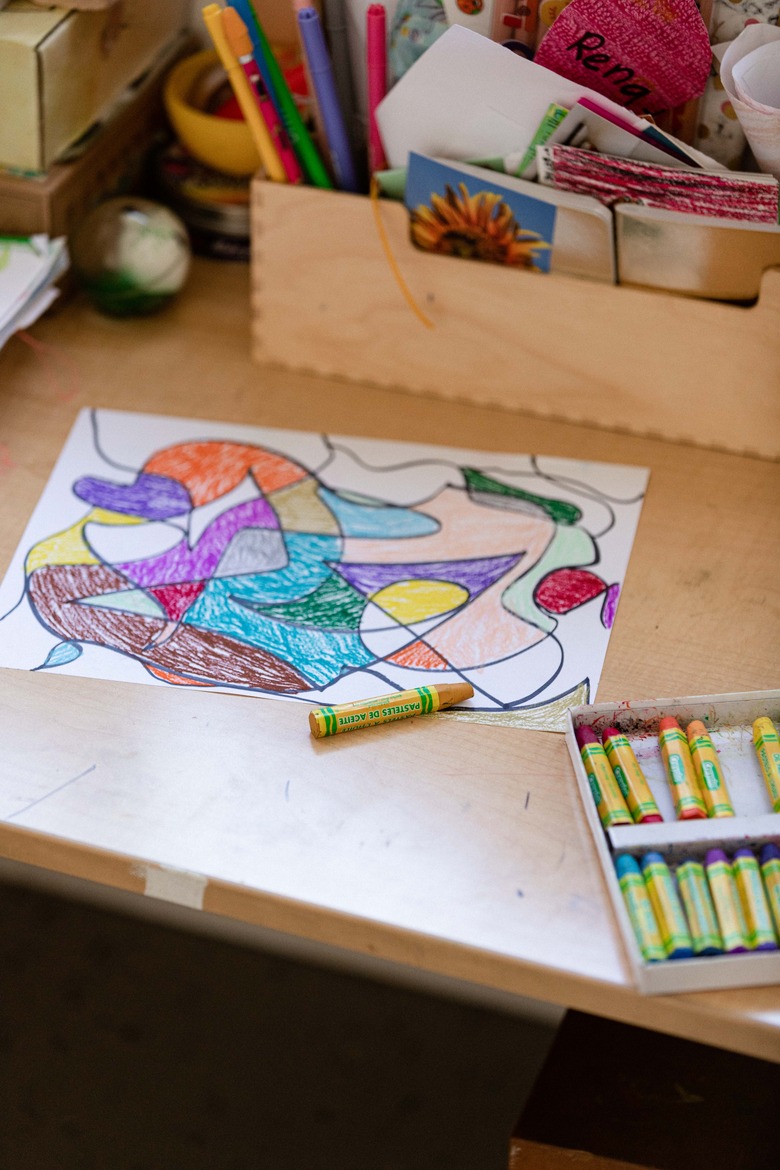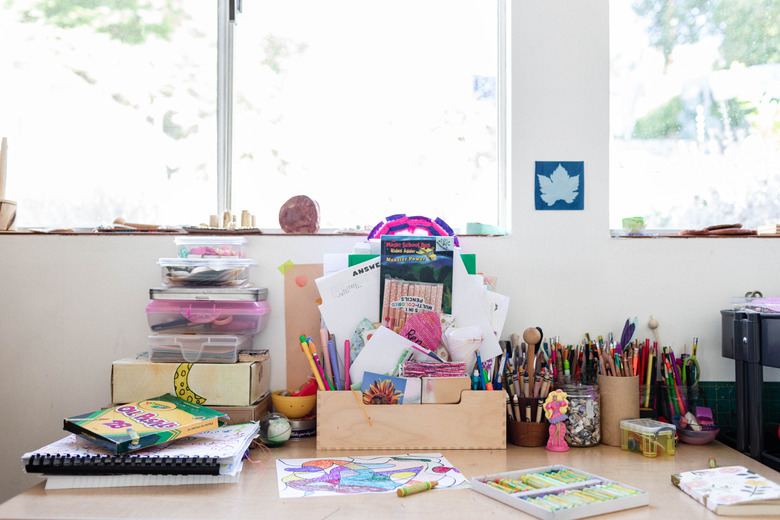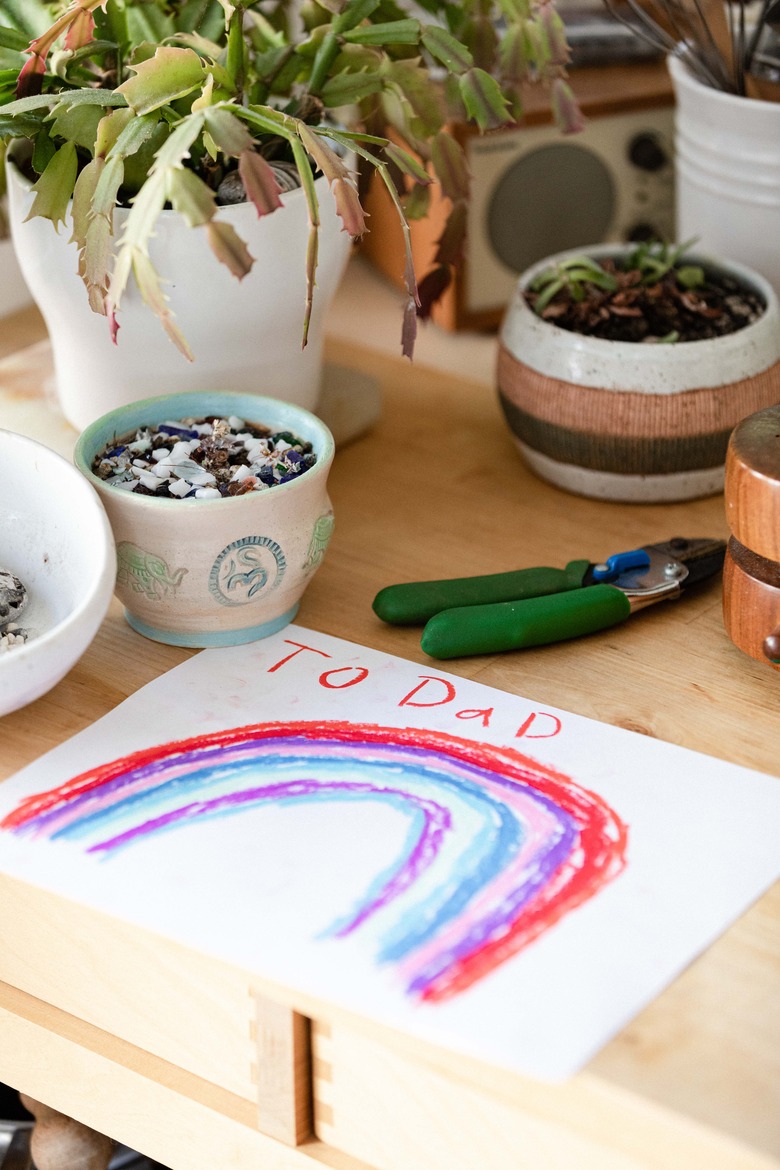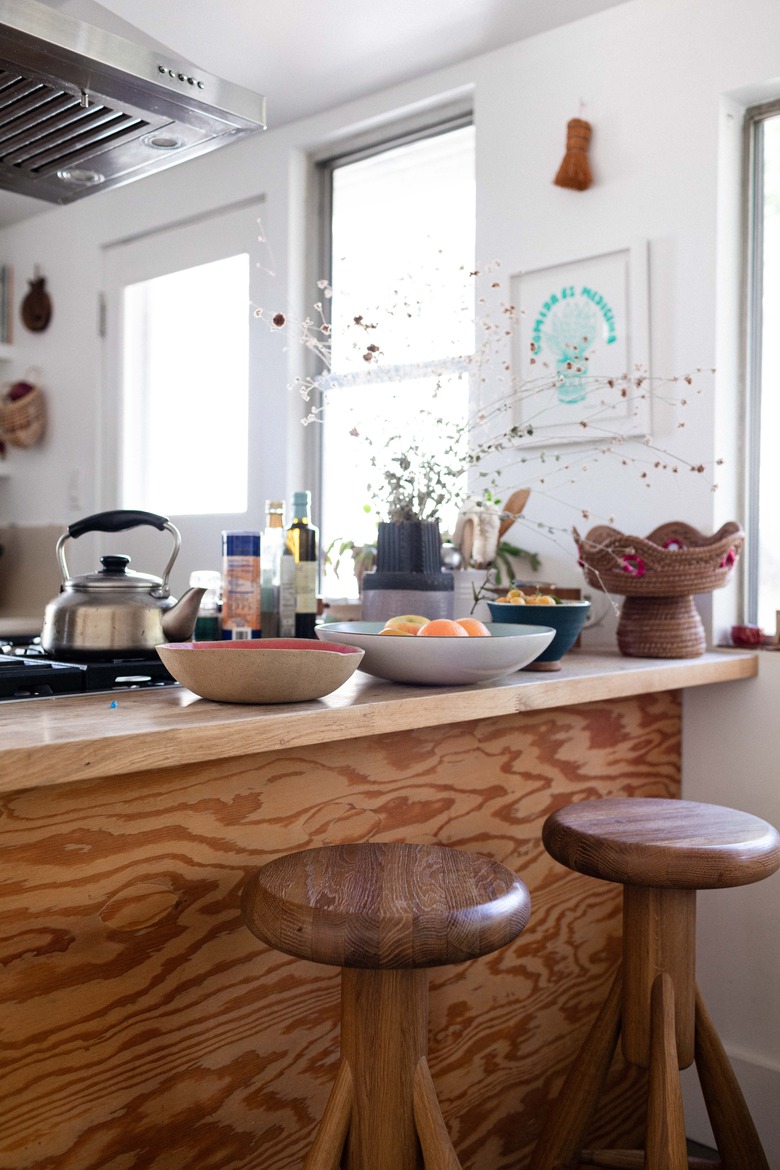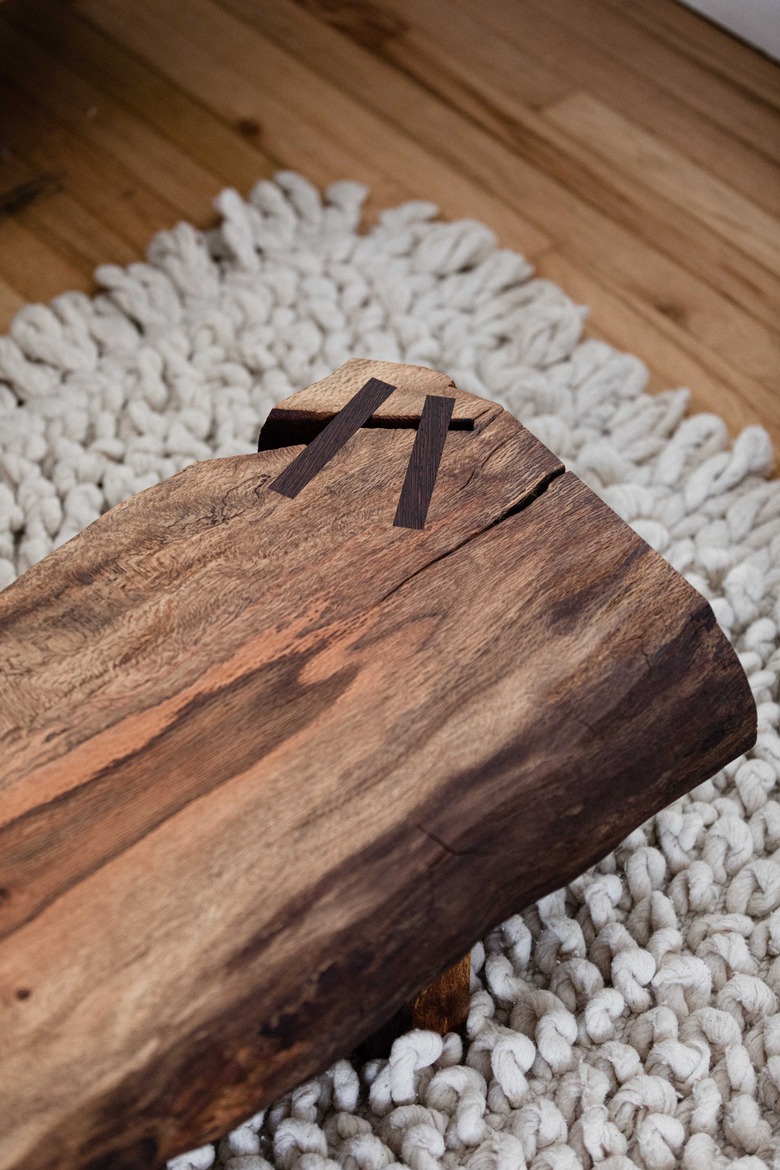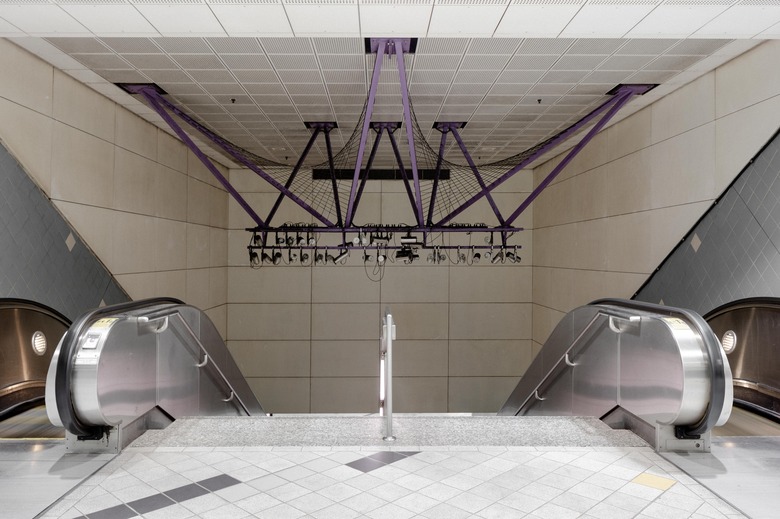Architect Of Impact: Letitia Fernandez Ivins
There are few people in the world who have the opportunity to manage the integration of art for an area as expansive as the one Letitia Fernandez Ivins oversees and that has an audience that numbers in the millions each week.
And we aren't talking about a virtual space where digital impressions are key, though her current role does involve selecting impactful moving images and managing mobile galleries. The art she commissions can also stretch several stories high and exist hundreds of feet below ground, requiring thoughtful (and high-stakes) collaboration with a broad range of parties who speak languages Ivins may not be fluent in but that she needs to comprehend on some level.
As senior manager of arts and design at L.A. Metro, Ivins works for a transportation system that spans nearly 5,000 square miles, populated by nearly 10 million people. Now imagine what you would do if you were on the team entrusted with coordinating public art in Los Angeles, for everything from subway stations to bus facilities to the historic Union Station, with the mission to enrich the lives of all Angelenos. That's quite a task.
Sheila Klein, Underground Girl, 2000, Hollywood/Highland Metro Station
"I do believe when people see art, especially art that resonates for them, they feel safer. It sends the message that this space, this platform, this public plaza, this train is theirs, so own it and get on board." — Letitia Fernandez Ivins
Hunker visited the mother of two at her home in Eagle Rock to learn more about her role at Metro, why public art became her calling, what factors influence the county agency's selection of artwork, and how we can bring some of its sensibility into our own homes.
Teena Apeles: You have been working in community arts programming for more than a decade. What drew you to this field?
Letitia Fernandez Ivins: It was having grown up with a grandfather who was a working artist, witnessing that potential pathway and life, paired with my mom's voracious pursuit of free festivals and art-making events around the county. I grew up in Los Angeles that way, with an appreciation for cultural diversity ... in fact, diversity just was. That said, I wasn't offered so many opportunities in the visual arts growing up. My dad's a scientist and my mom's a nurse, so in school, math and science were the emphasis, but I eventually found theatre as a platform. The performing arts showed me the transformative power of self-expression, teamwork, and storytelling and ultimately inspired my professional pursuits in arts and culture.
TA: Was there a major stepping-stone that led you here?
LFI: While I was an undergraduate at Vassar, I also had the advantage of having two Getty Multicultural Undergraduate Internships. These experiences broadened my awareness of Los Angeles's cultural vibrancy, the culture workers and the arts organizations that didn't just entertain, they reinforced community solidarity and self-determination. And while the museum setting was novel, I knew pretty immediately after school that I wanted to work in a nonprofit setting closer to the ground, with a social purpose. The concept of art in the public realm really turned me on because I was an avid Metro rider and grew up taking the bus.
On one morning commute, I was struck by the new rotating light-box artwork in my the Metro Vermont/Beverly station and thought, "Someone cares not only about getting me from point A to point B safely, but about my intellectual journey." This otherwise invisible public agency welcomed my subjectivity, believed that people deserve beautiful stimulation for contemplation. I was convinced, "We need more. One day I'm going to work in public art — one day I'll work for Metro."
TA: You mentioned a lot of art and furniture in your home is by your husband and his mom.
LFI: My husband, Ed, is an artist, an occupational therapist, and woodworker. My mother-in-law, Jane Greengold, is a public interest lawyer and public artist, and she did this while raising four children. When I visited Brooklyn for the first time in 2000, I got out at the Grand Army station, Ed casually remarked, "My mom did that artwork," and I was like, "What? Who else is behind this?" I want to support artwork like this — accessible to the public, practical yet poetic.
TA: Can you describe your responsibilities at Metro?
LFI: Since Metro's inception, artists and artworks have been integrated into the design and construction of all capital projects — whether for a station or a public-facing facility that serves buses or trains. When project planning begins, I work with our Metro Arts & Design team to develop an approach to artwork integration that's responsive to station design and the neighborhood context. Identifying and realizing Metro art opportunities requires consensus and relationship building, technical assessments of potential materials — whether metal, glass, mosaic, stone, or resin — and reviews of architectural drawings for transportation. I guide artists in their design process, including their community engagement, and oversee the fabrication and installation of the artworks, interfacing with professionals across several disciplines and community members across interest areas.
TA: Can reviewing the technical information be challenging?
LFI: There are definitely multiple languages in this work, and a certain degree of code-switching, not in an inauthentic way, just knowing one's audience to communicate, not alienate. In terms of the construction piece, that's been an exciting learning curve. Absolutely learning by doing public art is essential. Whether it is coordinating a traffic-control plan with a contractor and municipality during a construction project, or reviewing a set of fabrication-shop drawings for a significant sculpture. It's not only about making it pretty, but using materials that can withstand the wear and tear of the transit environment and L.A.'s climate.
TA: How much artwork does your team manage?
LFI: We have 300-plus works in our system, and it's quite a range, from immersive sculptural stations like Hollywood/Highland with artwork by Sheila Klein, where you literally descend into a cathedral-like pelvis to a series of vibrant two-dimensional mosaic, and porcelain-enamel steel pieces along the Expo Line.
TA: Klein used to be in L.A., but is now based in Seattle. Metro does not use only local artists, correct?
LFI: The public art world has a mutual understanding that we want the artist in Milwaukee to have the same opportunities as the artists in L.A. We want artists in New Orleans to have opportunities in New York. Whether forced or by volition, artists also tend to move a lot, and yet have strong connections to places where they're from or where they've been. There's a power in providing more opportunities for everyone and welcoming a new way of seeing your hometown. Now, that being said, the vast majority of the artists we work with are based in Los Angeles, about 75 percent. We're lucky to have such a wealth of creative talent in our region, so we rarely have to look far. In fact, we just opened a big call to visual artists!
TA: Do artists from outside L.A. immerse themselves in the neighborhood they are designing for?
LFI: Yes, all Metro artwork must be site-specific, so a certain amount of immersion, research, observation, and engagement is required for artists to gain inspiration as they develop designs. We invite artists to interpret "site-specificity" and to propose an approach to community engagement that is natural to their artwork creation process.
Artist Audrey Chan pounded the pavement having conversations with people over the course of three years to create her final artwork for the future Little Tokyo/Arts District Station slated to open in 2022. Meanwhile, Pearl C. Hsiung, whose work for the future Grand Ave/Bunker Hill Station is a highly abstract depiction of eruptive change in the neighborhood, was completed within a year. Her community engagement, involving art-making workshops related to the artwork's concept, will be geared toward local youth and occur through the years leading up to the station opening also in 2022.
TA: What you do is touching millions of lives. Can you talk about what informs your process?
LFI: We like to invest time in the pre-planning, developing relationships with community members, listening to stakeholders and riders about things like what makes them proud of their neighborhood? When they leave, what do they miss? Where do they go for inspiration in their community? Drawing out what those values are and characterizing that for project-specific goals. For the Willowbrook Rosa Parks Station, we heard that community members want artwork that is colorful, vibrant, and bold informing the designs currently underway.
I also ask people, "What do you want artwork to do?" rather than "What do you want it to be?" What it will be is the artist's job. And I'll ask, "How do you want it to make you feel?" This begins to give us the material, the community aspirations, and the values to convey to artists developing concept designs.
TA: How does it make you feel when you see people interact or not interact with the pieces?
LFI: It's gratifying to see people interact no matter their response is. At Union Station, there is one piece in particular that is in the east portal, by Richard Wyatt. When you descend from Patsaouras Transit Plaza on foot into the Union Station passageway, a massive mural greets you. I watch people gaze up at that piece admiring the majesty of that work from its scale to execution. Jaws drop and selfies are taken. And this is one measure of success in public art: Does someone want to take a picture with it?
And on the flip side, we have a temporary rotating photographic light box series that goes through that passageway [leading to the train tunnels], and they currently feature women that work at Metro. It's called Forward Motion by Michele Asselin, and it was inspired by our Women and Girls Governing Council, which is focused on how Metro serves the specific needs of women and girls from employment to rider experience, and everything in between.
TA: Does this include safety?
LFI: Yes, this is number one for Metro. We are particularly interested in how, when, and with whom women ride so that we can better accommodate their lifestyles while ensuring they feel safe and secure.
TA: How do you measure the success of a project, or is it even about success?
Metro artworks are community assets. They can be installed for 25 years or more. We think about how these artworks can remain relevant for neighborhoods over time. While there is much room to grow when it comes to developing a shared approach to evaluation in the public art field, this lack of uniformity is indicative of the fact that each project has community-specific goals, therefore requiring project-specific measures of success. Were we able to foster civic pride, were we able to create something vibrant, were we able to honor Rosa Parks? These goals are specific to particular neighborhoods. Were we able to uplift little-known stories? You know those are the qualitative measures of success.
In terms of ridership, we don't make a causal link "more people go to this station because the artwork is better," but, rather, the Metro Art Program is part of the suite of solutions that improve and enliven the rider experience. When it comes to evaluation, I might ask, "Are we doing a good job of making people feel welcome, feel safe?" I do believe when people see art, especially art that resonates for them, they feel safer. It sends the message that this space, this platform, this public plaza, this train is theirs, so own it and get on board.
1. Credits
Words: Teena Apeles
Images: Stephen Paul
